Tilling your garden is an important part of gardening. It helps to break up the soil, mix in amendments, and prepare the bed for planting. But there are a lot of questions about when to till the garden. When is the best time to do it? What are the benefits? How can you tell if your soil is ready? In this article, we will answer all of those questions and more! So read on to learn everything you need to know about when to till your garden!
Why Should You Till Your Garden
When it comes to gardening, there are a lot of different opinions out there. Some people swear by tilling, while others think it’s unnecessary. So, what’s the truth? Is tilling really necessary, or is it something that you can skip?
Tilling is the process of breaking up the soil in your garden. This can be done with a shovel, hoe, or tiller. Tilling has many benefits, let’s talk more about them!
It helps loosen up the soil
One of the main benefits of tilling is that it helps loosen up the soil. This is especially beneficial if your soil is compacted or has a lot of clay in it. Tilling will help break up these clumps and make it easier for your plants to grow.
Tilling also helps improve drainage in your garden. If you have problems with water pooling in your garden, tilling can help fix that by breaking up the soil and allowing water to drain through more easily.

If you have compacted soil, tilling will help to loosen it up so that air and water can reach the roots of your plants. Tilling also helps to break up clumps of dirt and rocks so that your plants can grow more easily.
It helps to get rid of weeds
Weeds can be a real pain in the garden. They steal nutrients from your plants, and they can be difficult to get rid of. However, tilling can help with that! When you till the soil, you’re essentially breaking up the roots of the weeds. This makes it easier for you to pull them out by hand or with a hoe.
Tilling also discourages weed seeds from germinating in the first place. Weed seeds need sunlight to germinate, and tilling expose them to sunlight. This means that there are fewer weed seeds in the soil to begin with, which will make your life a lot easier!
Tilling is a great way to prepare the soil for planting
Tilling also helps to prepare the soil for planting. If you till before you plant, the roots of your plants will be able to penetrate the soil more easily. This will help your plants to grow faster and healthier. [1] [2] [3]
Downsides of Tilling
Tilling can also have some drawbacks. This is especially true if you have very poor soil, to begin with, or if you till too often.
It destroys the natural structure of the soil
The soil is made up of different-sized particles, from very large sand grains to tiny clay particles. These particles are held together by organic matter, like dead leaves and roots. Tilling breaks up these larger pieces of organic matter into smaller pieces, which makes it easier for water and air to move through the soil. This is good in some ways, but it can also be bad. When the natural structure of the soil is destroyed, it becomes more difficult for plants to get the water and nutrients they need.
Tilling can also kill helpful organisms in your soil. These organisms help to aerate the soil, break down organic matter, and control pests. If you till too often, you can damage these helpful organisms and make it harder for your plants to grow.
And since you are breaking up the soil particles, it can lead to soil erosion and runoff. Soil erosion is when the top layer of soil is washed away by water or wind. Runoff is when water runs off of your property instead of soaking into the ground.
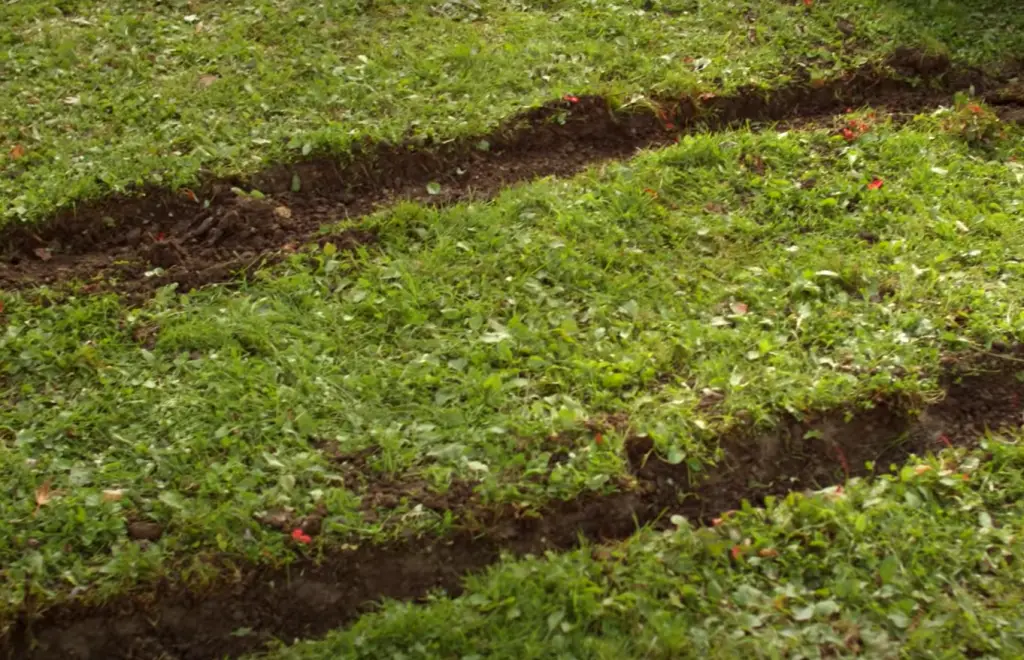
It can create weed issues in your garden
Another downside of tilling is that it can bring up weed seeds from the depths of the soil. If these weed seeds are close to the surface, they will be able to germinate and grow. Tilling can also disturb beneficial insects and other organisms that live in the soil.
Tilling can also disturb the roots of existing plants. If you till around existing plants, their roots can be damaged or uprooted. This can stress the plants and make them more susceptible to diseases.
It’s time-consuming
Tilling can also be a lot of work. If you have a large garden, tilling can take hours or even days to complete. And if you have to do it every year, it can be very time-consuming. [3]
When to Till the Garden
A lot of people wonder when the best time to till their garden is. The answer to this question depends on a few factors, such as what type of plants you are growing and what type of soil you have.
Another important factor to consider is the climate in your region. If you live in an area with a long growing season, you can probably till your garden a little earlier than someone who lives in an area with a shorter growing season. This is because you’ll have more time to let your plants recover from any damage that might be caused by tilling. On the other hand, if you live in an area with a short growing season, it’s best to wait until later to till your garden so that your plants have more time to grow.
Spring tiling
Most gardens are tilled in the spring, before planting. This allows the gardener to loosen up the soil and remove any debris or weeds that might be present. Spring tilling also provides an opportunity to add amendments to the soil, such as compost or fertilizer.
If you live in an area with a short growing season, you may want to till your garden in early spring, as soon as the ground can be worked. This will give your plants a head start on the growing season.
The temperature in your area is something else to consider. If you live in a cold climate, tilling too early in the spring can be detrimental to your plants. The soil will be too cold and wet, and your plants may not be able to take root properly. In this case, it’s best to wait until the soil has warmed up a bit before tilling.
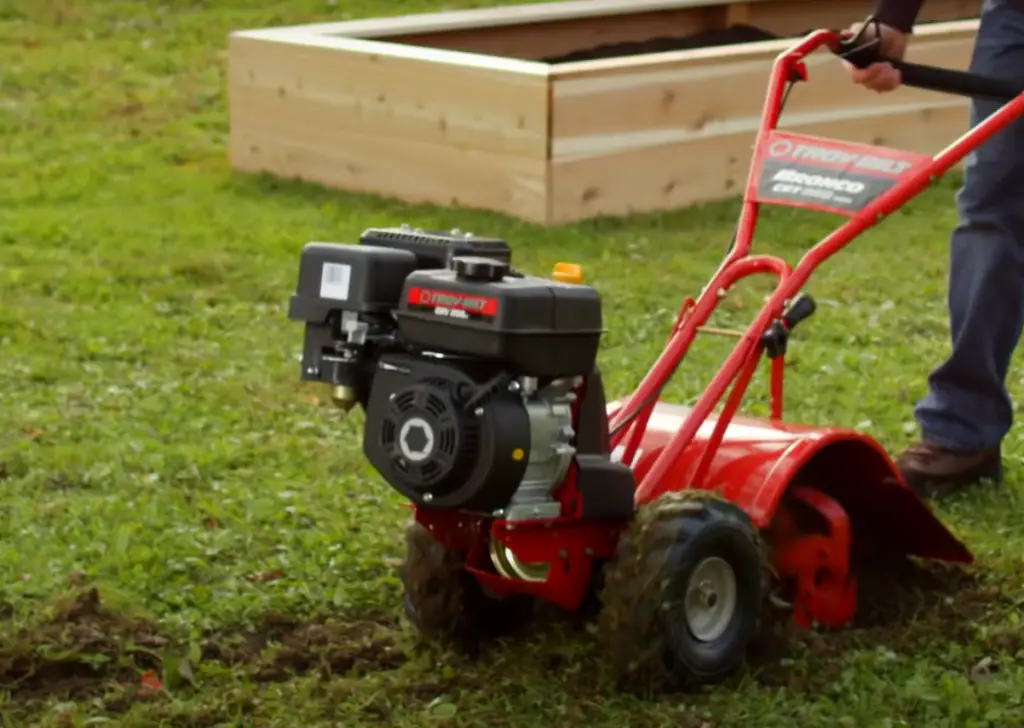
To check the condition of your soil, insert a trowel or your fingers about two to three inches into the ground. If the soil sticks together in a clump, it’s too wet to work.
Fall tiling
In cases when soil is too wet to be worked on in spring, some gardeners will till their gardens in the fall instead. This can be a good option, as it allows the soil to dry out and settle before you plant in the spring.
Tilling in the fall also gives you an opportunity to add amendments to your soil, such as compost or manure. These will have time to break down over the winter and be ready for planting come springtime. In addition to that, fall tilling can help you get rid of pests residing in your garden!
If you do choose to till in the fall, make sure you do it early enough that the ground has a chance to freeze before winter sets in.
Fall tilling is also a preferred option if you plan on planting vegetables like lettuce or spinach in the spring. These plants do best when they are planted in cool weather, so tilling in the fall gives them a head start on the growing season.
As with spring tilling, make sure the soil is not too wet when you till in the fall. Working wet soil can compact it and damage its structure.
No matter what time of year you choose to till your garden, perform it carefully and mindfully. Over-tilling can damage your soil and make it difficult for plants to take root. So take your time, and be gentle with your soil! With a little care, you can have a beautiful garden that will thrive for years to come. [4]
How to Properly Till the Garden
Now that you know when to till the garden, it’s important to learn how to properly till the soil. In this section, we’ll go over some tips on how to get the best results when tilling your garden.
Equipment you’ll need
Obviously, the first thing you’ll need is a tiller. If you have a large garden, you may want to consider renting a gas-powered tiller from your local hardware store. For smaller gardens, a hoe or a regular hand tiller will do just fine. But for larger gardens, you may need something bigger, like a tractor-drawn tiller. No matter what you choose, make sure the tools you are using are sharp, as dull tools can damage the soil.
You’ll also need gloves, a mask (to protect your lungs from dust), and earplugs (if you’re using a machine to protect your ears from the noise).
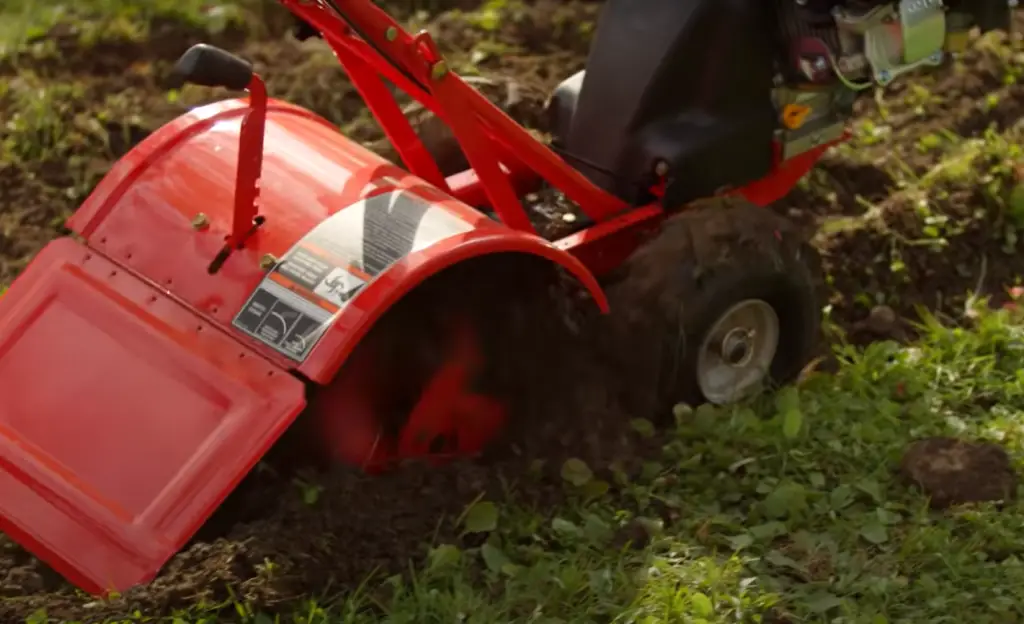
If you’re using a power tiller, make sure it’s in good working condition before you start. Always read the manufacturer’s instructions carefully before operating any machinery.
Last but not least, have plenty of water on hand in case you get thirsty while working!
Mark the tilling area
Before you start tilling, it’s important to mark off the area where you’ll be working. This will help you avoid accidentally damaging any plants that you don’t want to disturb.
Use a piece of string or garden hose to outline the area where you’ll be tilling. Then, use a spade or hoe to mark a line around the perimeter of the area. This will create a trench that will serve as your guide when tilling.
Make sure the trench is at least two inches deep so that you can easily see it when tilling. If necessary, use a marker or paint to make the trench more visible.
Till row by row at a time
When you till your garden, it’s best to do it row by row. This will help ensure that you don’t miss any spots and that all of the soil is turned over.
Start by running the tiller along the edge of your garden bed. Then work your way down the length of the bed, making sure to overlap each pass with the previous one. Once you’ve gone over the entire bed, turn around and go over it again in the opposite direction.
If you have a large garden, you may need to make several passes in order to fully till all of the soil. Just be patient and take your time!
When you do start tilling, be sure to go slowly at first. This will help to prevent any damage that might be caused by the blades of your tiller. Once you’ve gone over the entire area, you can make a second pass if necessary.
Till in small sections
Tilling a large section of soil at once can be tempting, but it’s best to till the soil in small sections. This will make sure that you don’t miss any spots. It’s also important to go over the entire area multiple times to ensure that all the soil is turned over.
Don’t till too deeply
One of the most important things to remember is to never till too deep.
Don’t go back and forth
When you’re tilling the soil, it’s important to go over each section only once. Going back and forth can damage the structure of the soil and make it difficult for roots to penetrate. In addition, it can also lead to the compaction of the soil.
If you need to till a large area, it’s best to divide it into sections and work on one section at a time. That way, you can be sure that you’re not damaging the soil as you work.
And when in doubt, always err on the side of caution! It’s better to till too little than too much. You can always go back and do another pass if necessary.
Remember, the goal is to loosen up the top layer of soil so that roots can penetrate easily. You don’t need to turn over the entire garden, just the top few inches.
Pick up large untillable chunks by hand
No matter how careful you are, there will always be a few large chunks of soil that the tiller can’t break up. These pieces can damage your tiller, so it’s important to remove them by hand before you start tilling. This not only includes particularly hard soil, but also rocks, roots, and other debris.
Apply mulch if you want to
If you want, you can apply a layer of mulch to your garden after tilling. This is not necessary, but it can help to keep the soil in place and prevent weeds from taking root.
Mulch is typically made from organic materials like wood chips or bark. You can find it at most garden stores, or you can make your own. Just be sure to avoid using anything that might contain chemicals or other harmful substances.
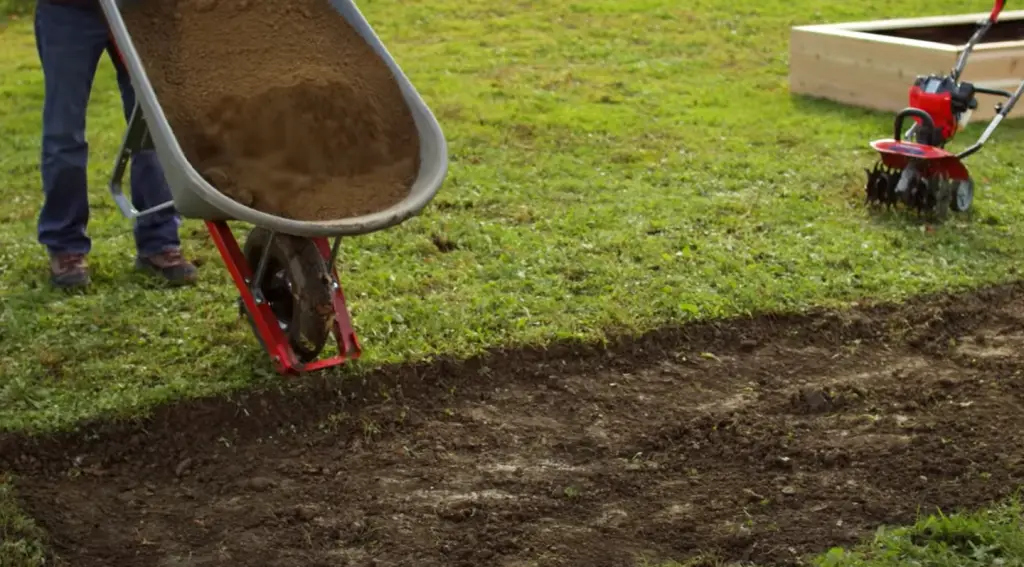
Add compost if necessary
If your soil is in need of nutrients, you can add compost to it after tilling. This will help to improve the quality of your soil and make it more fertile.
Compost is made from organic materials like leaves and kitchen scraps. You can either buy it at a garden store, or you can make your own. If you choose to make your own, just be sure to do it in an area that won’t disturb any of your plants.
Once you’ve added compost to your soil, be sure to mix it well before planting anything. Otherwise, the roots of your plants may not be able to reach all of the nutrients they need.
We suggest against adding chemical fertilizers during your first tilling. It’s best to let the soil rest for a few months before adding anything else. This will give the plants and soil time to adjust to each other. [1] [4] [5]
FAQ
Should the soil be wet or dry when tilling?
The soil should be moist but not wet when tilling. If the soil is too wet, it will clump together and be difficult to till. If the soil is too dry, it will be hard and compacted, making it difficult for roots to penetrate.
What is the point of tilling?
Tilling is the process of breaking up the soil in your garden beds. This is typically done in early spring before you plant anything. The goal is to loosen up the dirt so that your plant’s roots can easily grow down and access nutrients and water. It also helps to control weeds by disturbing their growth cycle.
What happens when you till the soil?
Tilling soil breaks up the ground and helps to aerate it, which allows water and nutrients to penetrate more easily. It also provides a good environment for planting new seeds or transplanted seedlings.

When done in the spring, tilling also helps to control weeds by exposing their roots to the sun and air. This dries out the roots and kills the weed. Additionally, tilling can help to loosen compacted soil so that plant roots can grow more easily.
What are the disadvantages of tilling?
Tilling disturbs the soil’s structure, which can lead to compaction. In addition, tilling exposes the soil to wind and rain erosion. Tilling also kills many of the beneficial organisms that live in the soil, including earthworms and microorganisms. These organisms help improve the soil’s fertility and drainage. Finally, tilling can bring weed seeds to the surface where they will germinate and grow. This can actually increase the number of weeds in your garden!
Useful Video: Why I Decided To Till My Garden
Conclusion
Tilling the garden can be a great way to aerate the soil and prepare it for planting. However, tilling too early or too late in the season can damage your plants. It’s important to till when the ground is dry and loose and to avoid tilling when the ground is wet or frozen. By following these tips, you’ll be sure to have a healthy garden that produces bountiful harvests.
Tilling your garden in the spring and fall is generally the best practice, as it helps to keep the soil loose and free of debris. Spring is usually a to-go season to till the garden. Just wait until the weather gets warmer and the ground begins to dry out. You don’t want to till when the ground is frozen or overly wet, as this can damage the soil structure. Fall is also a good time to till, as it helps aerate the soil and prepare it for winter. Thanks for reading!
References:
- https://gilmour.com/tilling-garden-soil
- https://www.gardeningknowhow.com/garden-how-to/soil-fertilizers/how-to-till-a-garden-tilling-your-soil.htm
- https://homeguides.sfgate.com/obsessively-clean-gadgets-13771620.html
- https://homeguides.sfgate.com/till-garden-first-time-37812.html
- https://www.gardeningknowhow.com/garden-how-to/soil-fertilizers/how-to-till-a-garden-tilling-your-soil.htm





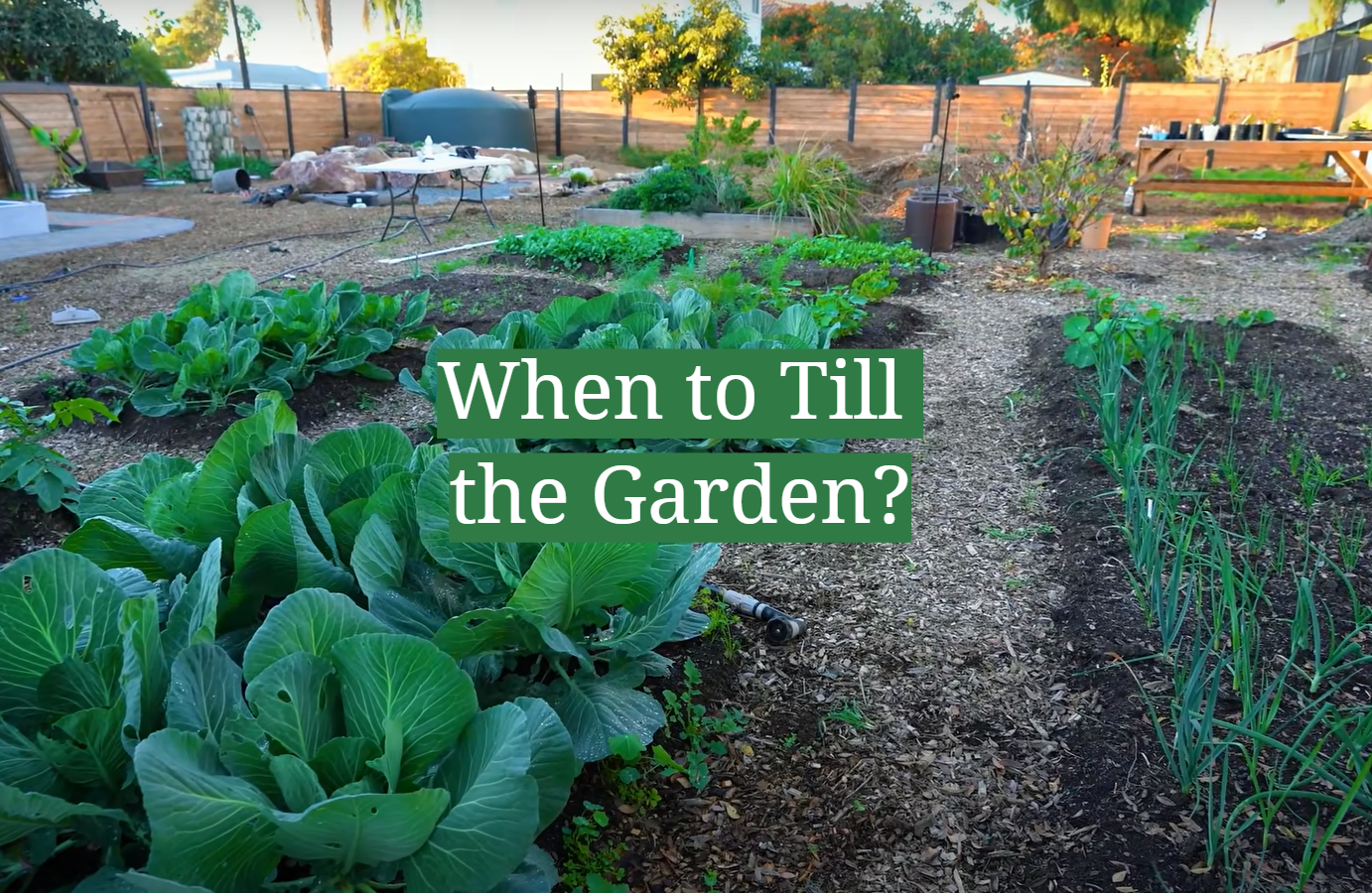




Leave a Reply
View Comments